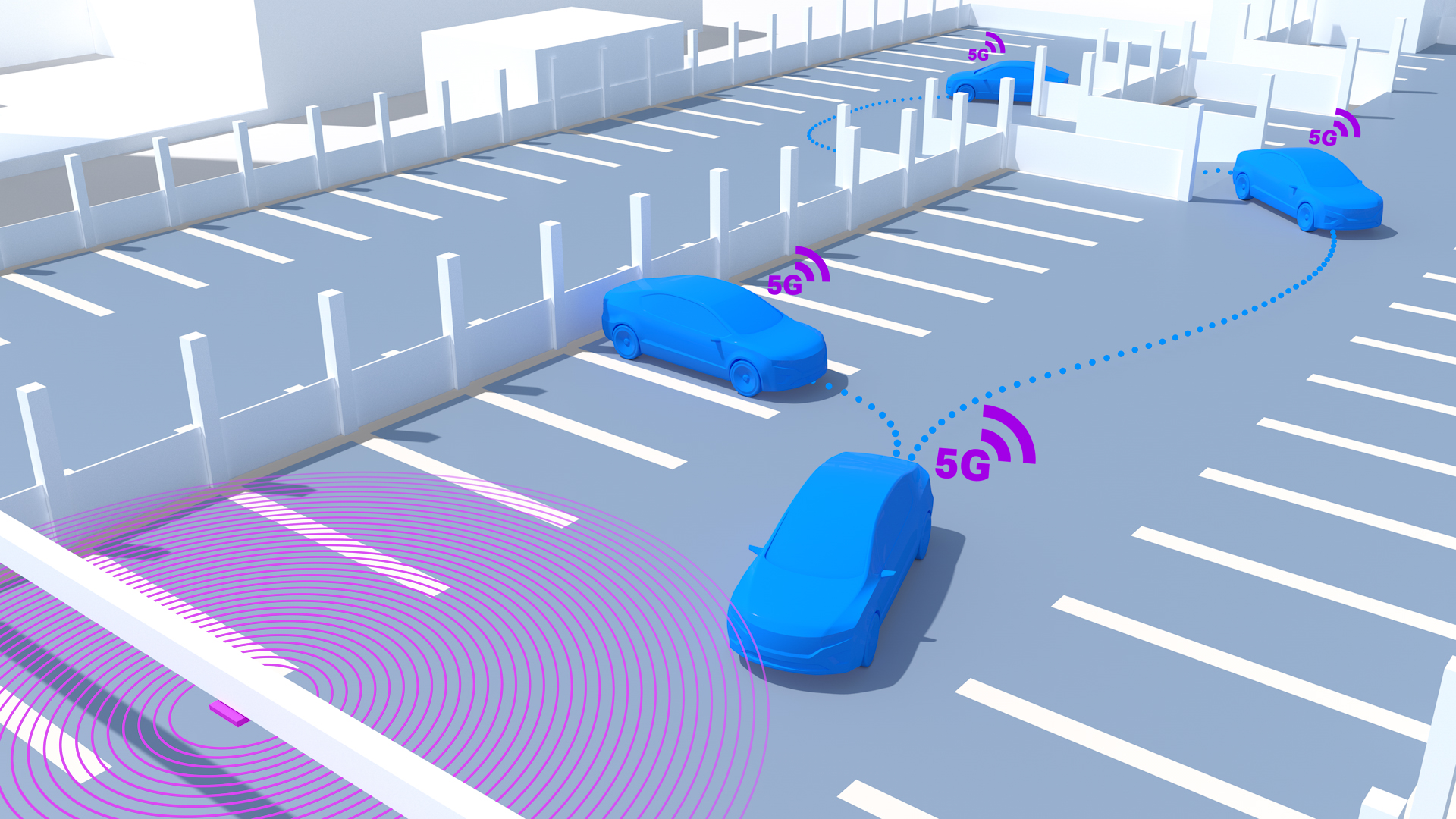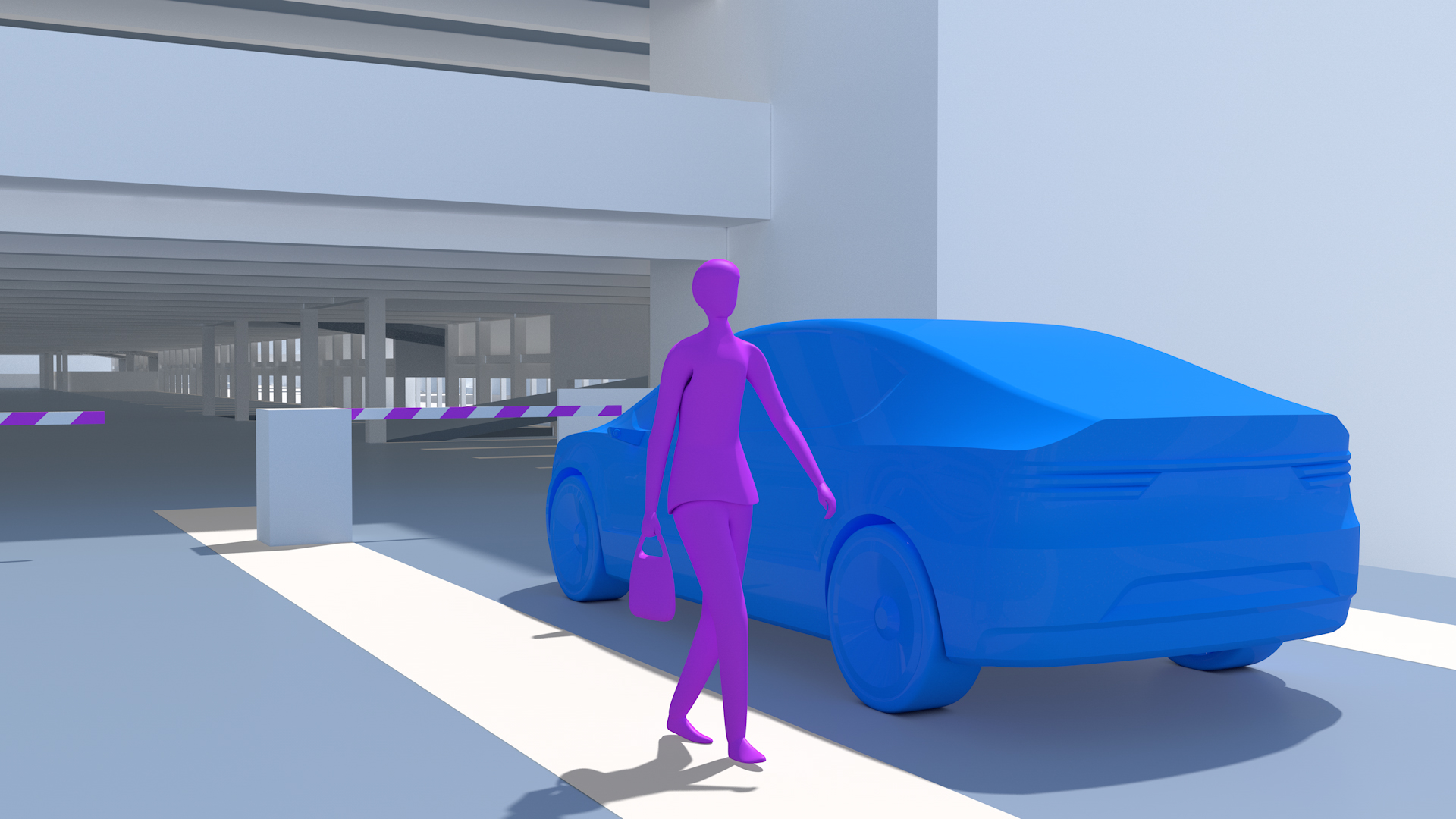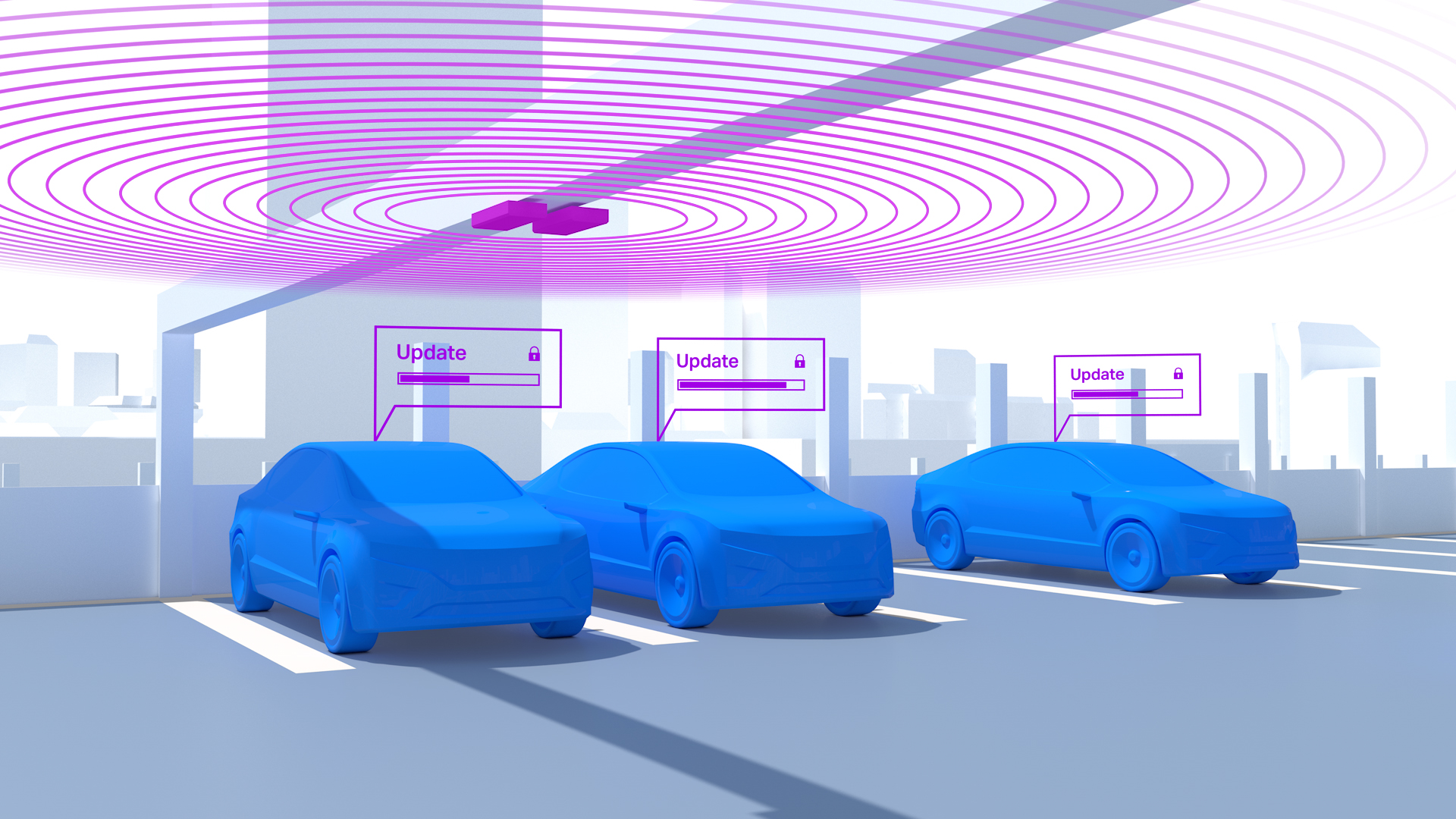A step out of the Lab
IAV offers holistic connected services. In addition to the development of connected car services with fully automated end-to-end testing in a state-of-the-art mobile network laboratory, a configurable 5G network is available in Gifhorn to ensure these services. Campusnetworks are mobile networks that cover only a limited area. Such networks can be set up on test sites as in Gifhorn, but also on digitized farms, in parcel distribution centers, or at airports to increase efficiency and simplify workflows. In Gifhorn, the latest generation test network (including 5G Backbone Stand Alone (SA)) extends over an outdoor application route: a public road, a parking garage, a connectivity laboratory, and a crash facility. Here, connected car services are tested directly in the vehicle under various and especially non-optimal conditions. Radio parameters can be manipulated to their limits – a benefit since test conditions on the road are not influenceable and hardly reproducible.
Our 5G-Campus Setup
The radio network planning of the 5G network at the IAV Gifhorn location shows comprehensive coverage over the application route, public road, parking garage, and crash facility.
Technical parameters
The network, available since mid-2024, unleashes the full performance spectrum of 5G: average data rates of 800-1000 MBit/s and a latency of approximately 14ms. Directly connected to the core network is a high-performance Mobile Edge Cloud (MEC), which is used for application testing.
And what can be done with the test infrastructure now?
A fully controllable and measurable network is available, into which customer vehicles/test tracks can be integrated. This allows emergency call tests of entire vehicles to be conducted even during a crash, without automatically alerting the local fire department.
Whenever a function or service with connected components needs to be examined in the overall system context, a reproducible environment is indispensable.
- How can it be achieved that a vehicle is data-driven and piloted into parking spaces on logistics areas during its production in a manufacturer-owned 5G campus network?
- Is it possible to rebook a new vehicle abroad into the correct public mobile network?
- How does the vehicle behave in terms of radio technology when crossing national borders?
- What happens when the data rate continues to drop during online radio streaming?
- What happens when the quality required by the online service for piloted or automated driving maneuvers (e.g., parking in a garage) is no longer met in terms of data rate or latency?
- Can I 'hack' a vehicle via mobile network and take control?
To answer these and other questions, we utilize the full range of functionalities of our 5G-Campusnetwork. Additionally, we include self-developed solutions. Our comprehensive 5G portfolio is as follows:
- E2E Solution – Simulation, Automation, Testing, and Validation
- Conducting tests in real-time under real environmental conditions
- Supports URLLC and eMBB 5G 3GPP FR1 use cases
- Continuous monitoring and seamless connectivity with end users
- Support for Android, Apple iOS, and Linux operating systems on end devices
Use Cases
Projects with Students
In connection with the 5G-Campusnetwork, various projects are underway with students from TU Braunschweig, TU Clausthal and Ostfalia University of Applied Sciences.
Read more
- Initial commissioning (two internships)
- 5G PiCar digitization project (cooperation with Ostfalia Wolfenbüttel and TU Clausthal)
- 5G data forwarding (internship)
- Development and validation of a concept for the performance evaluation of 5G-Campusnetworks (bachelor thesis)
- Performance test of a 5G-Campusnetwork using the example of a 5G-capable “balancing robot” (Bachelor thesis)
- SDR-based 5G measurement system with OAI (internship)
- Development and validation of a traffic control box for 5G-Campusnetworks (Master thesis)


